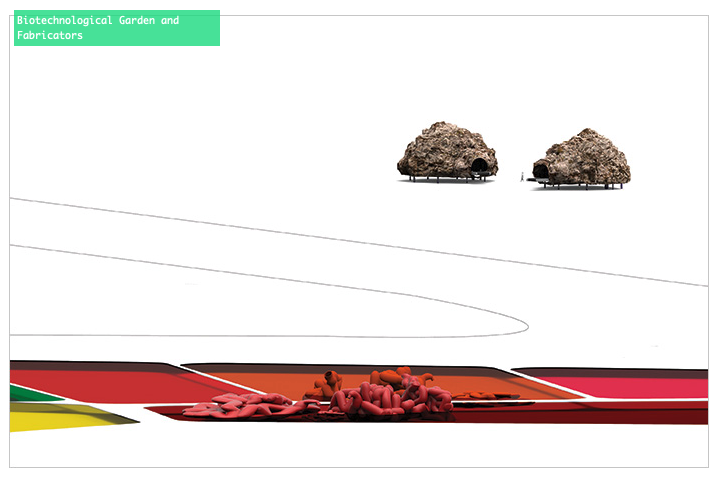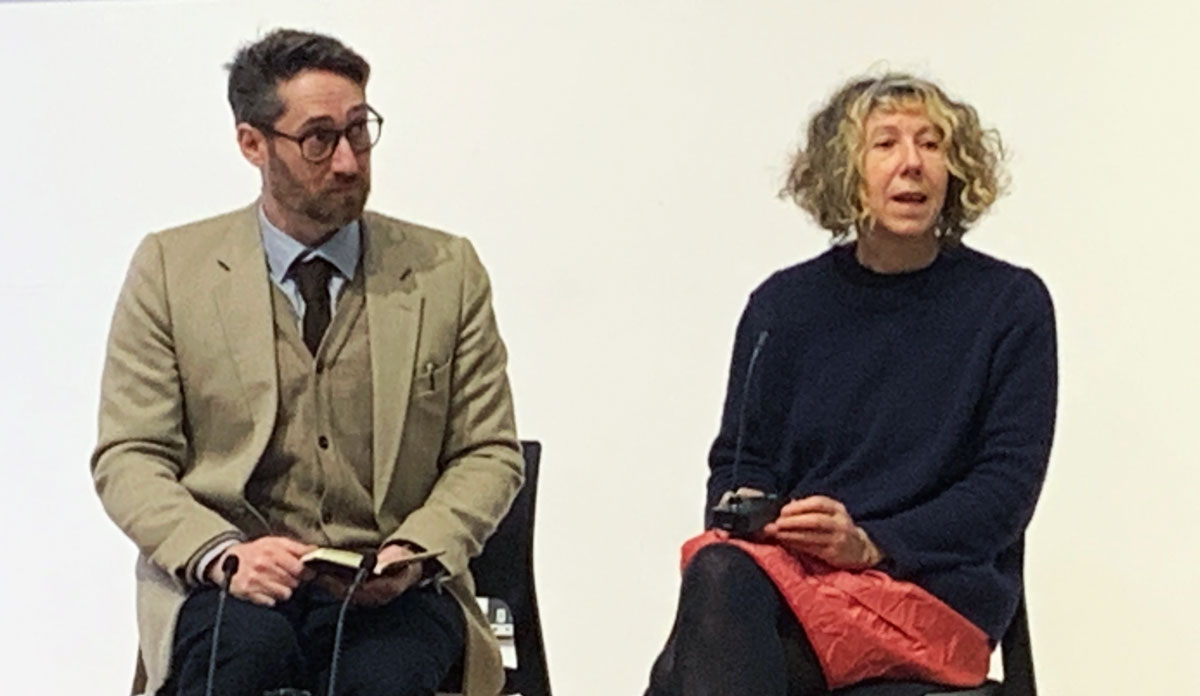Speculative Design & Science Fiction
The highlight of the day was the keynote by Fiona Raby. She gave an engaging talk, showcasing her more recent work which continues the themes from her and Anthony Dunne’s work – that of trying to make reality a bit bigger by using design as a vehicle for engagement with people’s imaginations.
Her talk was titled Realists of a Larger Reality which is a quote from speculative fiction writer Ursula K. Le Guin. In her November, 2014 speech at the National Book Awards, Le Guin stated, “hard times are coming, when we’ll be wanting the voices of writers who can see alternatives to how we live now, can see through our fear-stricken society and its obsessive technologies to other ways of being, and even imagine real grounds for hope. We’ll need writers who can remember freedom – poets, visionaries – realists of a larger reality.”
The link between science fiction and speculative design hadn’t occurred to me much before this symposium but of course they go hand in hand! The idea of rethinking or questioning current practices or social trends is the foundation for both science fiction and speculative design. In the Young Designer’s Guide to Speculative and Critical Design, Leon Karlsen Johannessen writes that “many ideas conceived in sci-fi are today real products. Inspired by visions of space travel and radical, futuristic utopias, engineers and designers developed technology that drastically transformed society. For example, Stanley Kubrick’s 2001: A Space Odyssey exposed cinemagoers to the ideas of tablet computers, Skype-like video telecommunication, and computers controlled with conversational interfaces ...”
To illustrate the correlation between science fiction and speculative design, Raby spoke about Edward Bellamy, the author of the utopian science fiction novel Looking Backward: 2000 to 1887, first published in 1888. The protagonist finds himself transported 113 years into future and the United States has been transformed into a socialist utopia. The advances of this new age include drastically reduced working hours for people performing menial jobs and almost instantaneous, Internet-like delivery of goods. The productive capacity of the United States is nationally owned and the goods of society are equally distributed to its citizens. All citizens receive an equal amount of "credit" and use cards similar to modern Debit cards. Music and radio are available in the home through a cable.
The main difference between science fiction or speculative fiction and speculative design is that the latter results in an object. Imagining and writing about an object is different to the act or practice of making an idea real. The process of design, iteration, and redesign offer multiple opportunities for reflection and reconfiguration. In her keynote, Raby said that “worlds can come alive through an object more than through an idea. This object offers an unexpected shift in what we know or perceive. Where does an object stop and the imagination begin?”
Fiona Raby went on to speak about her most recent projects with her partner Anthony Dunne and introduced two projects, Meinong’s Jungle (2015) and Many Worlds Working Group (2017).
Dunne and Raby explain Meinong’s Jungle “for Austrian philosopher Alexius Meinong (1853-1929), non-existent objects and even impossible objects such as round squares should be included in any proper taxonomy of objects, something we find very interesting in relation to our work with imaginary objects. We wondered if this extreme taxonomy of objects would open up some new aesthetic possibilities for dealing with the sort of fictional objects we work with.
And they describe Many Worlds Working Group, “the idea was to respond to research each member of the group was doing in the form of a design proposal or scenario. The group consisted of two anthropologists, a sociologist, a philosopher and a historian. The MWWG project (ongoing) has since evolved into a proposal for a new kind of facility for public imagining, set in an alternative Floyd Bennett Airfield on the edges of New York, which aims to provide a counterpoint to future visions as the primary framing device for imagining new realities. A sort of anti-futures facility, it would be a place where new worldviews can be developed and formulated into propositions, questions, hypothesis, ideas and what-ifs — useful fictions materialized through large scale partial prototypes and models forming temporary landscapes of (social) thought experiments made physical.

One of the aims of the project is to experiment with and deepen understanding of the mechanics of unreality — utopias, dystopias and heterotopias; what ifs and as ifs; hypotheses, thought experiments and reductionism and absurdum; counterfactuals and euchronia, and so on. That is, synthesizing ideas from political science, anthropology, sociology, history, economics and philosophy into new worldviews made tangible through an expanded form of design practice. The proposal itself is a question about the nature of futures and how they take shape within a society.”
It was fantastic to see new Dunne and Raby work and especially amazing to hear Fiona Raby discuss her work and influences in person.
Other speakers at the Symposium were:
Jason Cleverly
A very entertaining talk about his speculative practice within the museum setting.
Dan Byrne-Smith
The organizer of the Symposium. He gave the introduction to the day, led the Q&A's, and performed with Amy Cutler.
Amy Cutler
Gave a highly engaging talk about nature documentary and the anthropomorphism of insects and animals. She touched a little on Object Oriented Ontology and how to describe objects or animals without human attributes.
Marina Pestana
The independent co-curator of The Future Starts Here exhibition at the V&A and an artist herself. She brought up a great piont saying she found it difficult to curate exhibtions within large museums which overtly provoke critical thought.
Florence Okoye
A user experience design, founder of AfroFutures, and a curator. Her talk was a little inaccessible to me so here is a snippet from the brochure. “This talk will consider how artefacts created by participants, when analyzed within the framework of Black Quantum Futurism, indicate how an exploration of humanity’s self-inflicted environmental alienation via a decolonialist perspective on the history of the collection history is capable of self-generating small scale futurities in human-environmental relations.”
Amy Butt
Discussed the role of science fiction as a narrative mechanism which “reframes the present as past, seen through the lens of an imagined future. How might we utilize science fiction as a framing device within contemporary museums to establish a similarly estranged and critical perspective on the concerns of our present?”
